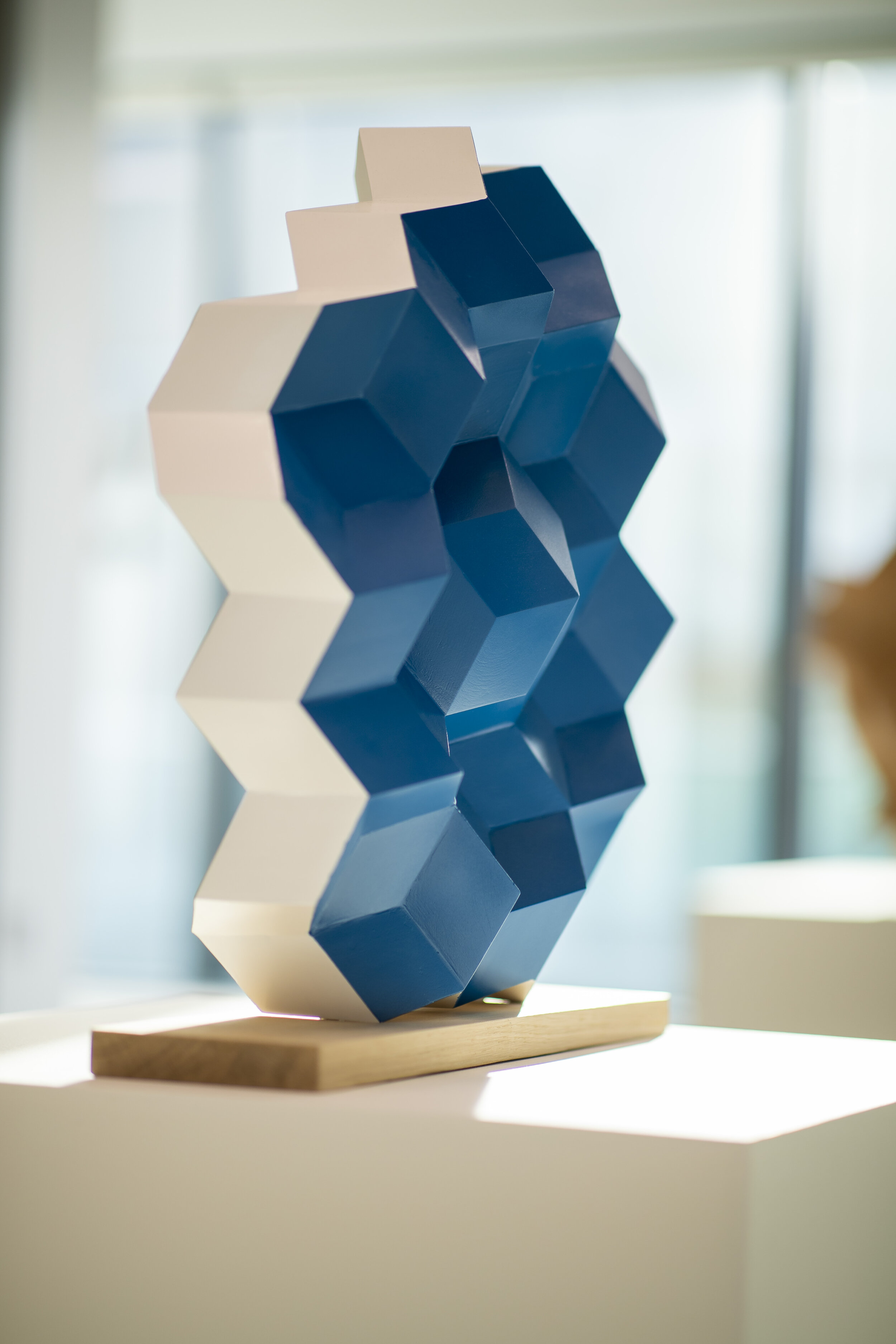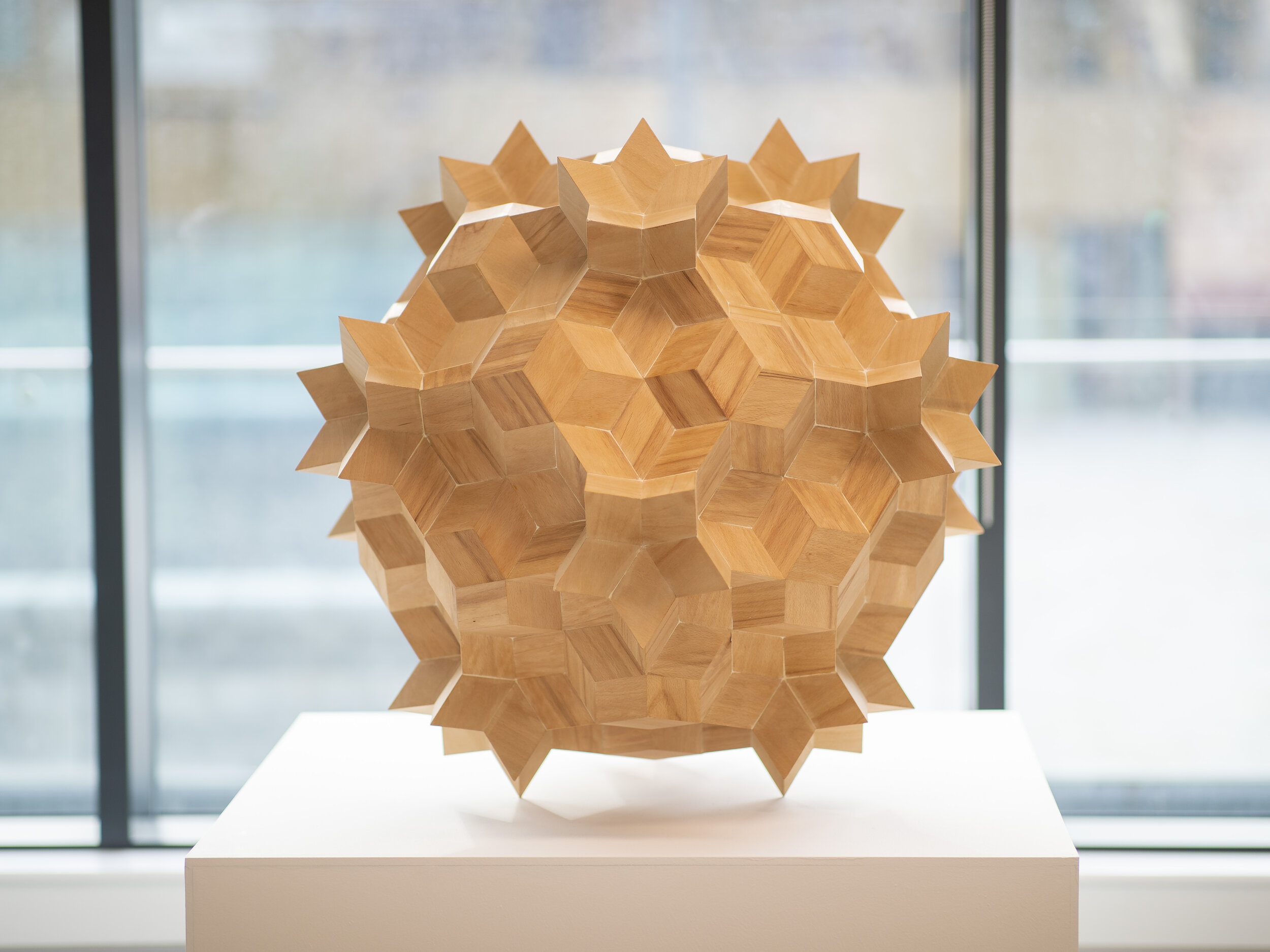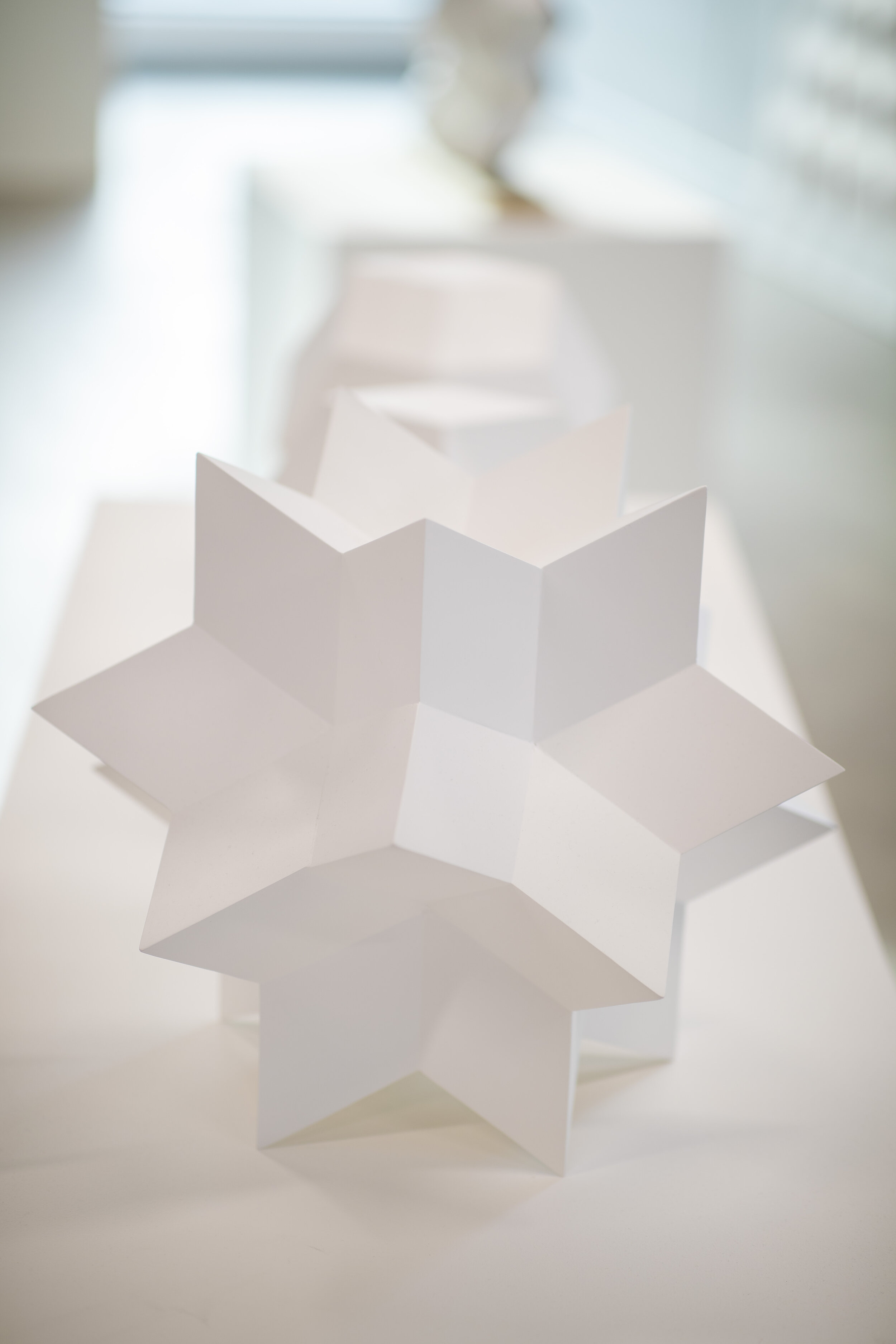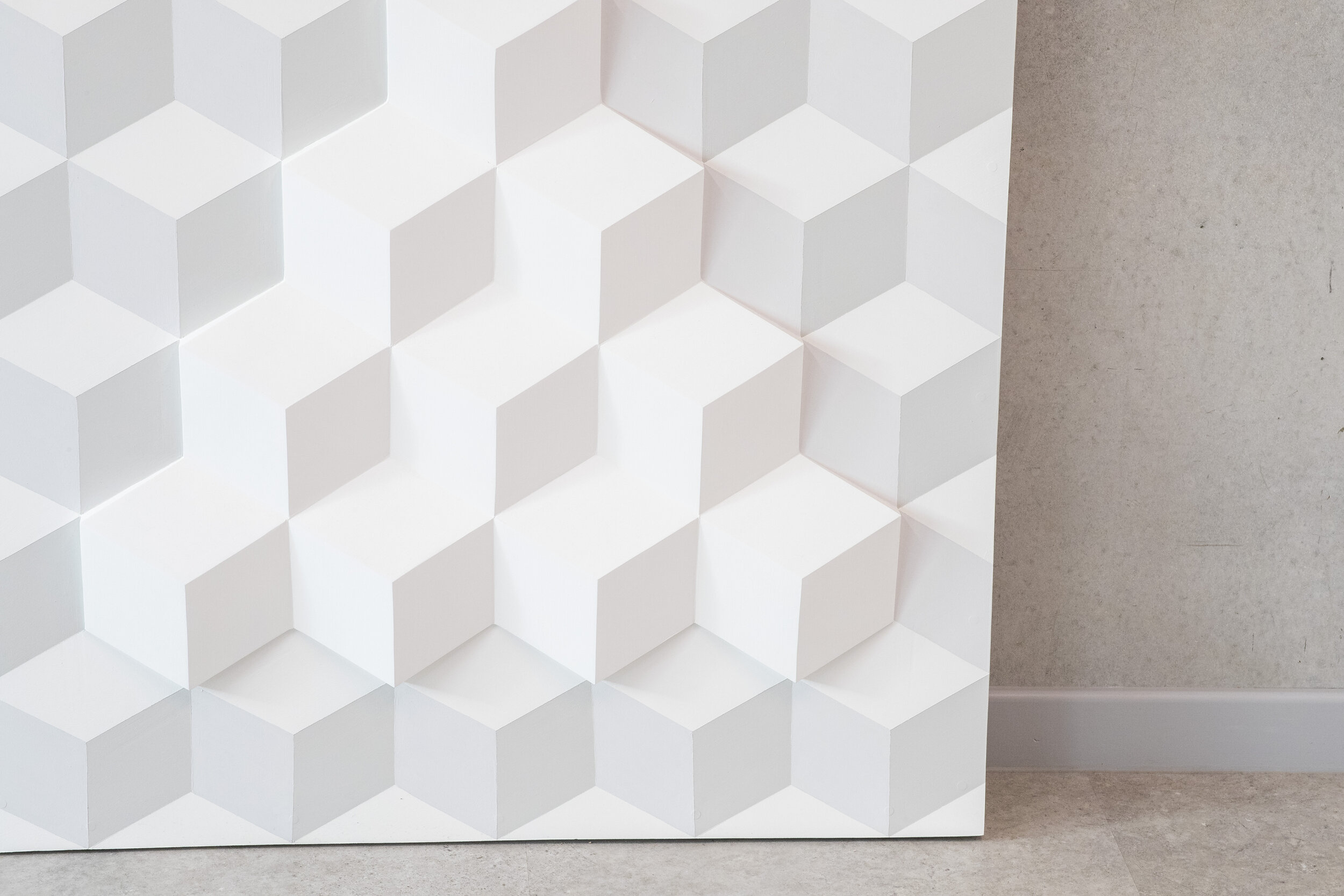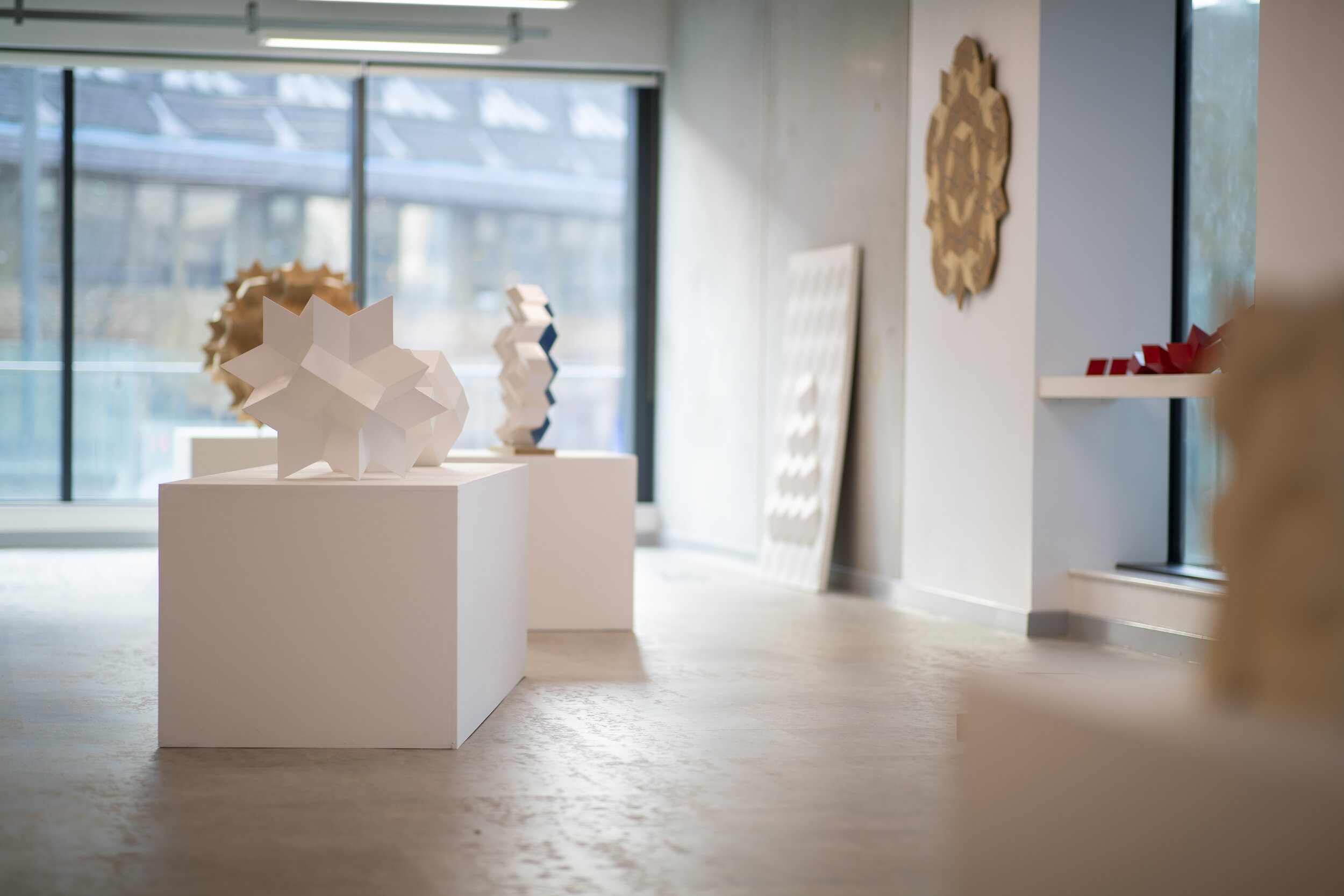Dominic Hopkinson
Scientific Sublime
Thursday 7 November 2019 - Friday 14 February 2020
Interview with Dominic Hopkinson
After graduating Fine Art at Exeter College of Art & Design, Hopkinson was invited to become a studio assistant for Peter Randall-Page, a role he undertook for about 18 months.
In 2005 he received Arts Council funding to undertake research into the Human Genome project and Bio-informatics with the “egenis” research group at the University of Exeter, culminating in a solo exhibition of new work. 2007 saw him invited to participate in a sculpture/stone carving symposium in Muster, as part of the Skulptur Projekt.
More recently Hopkinson was elected a member of the Royal Society of Sculptors, and is currently Artist in Residence at the School of Mathematics at University of Leeds, working on aperiodic systems in multiple dimensions.
In 2018 Hopkinson was invited to exhibit work in Venice as part of the Architecture Biennale, hosted by the European Cultural Centre.
What creates form? What creates space? Is there a ubiquitous mechanism that underpins all growth processes? Artists, engineers, architects, and designers all create shape, form and space, yet this process also happens spontaneously in nature. The wind forms ripples in sand and water, the dynamics of the atmosphere generates clouds. All animals and plants grow, create structure, occupy space according to rules and processes defined within their DNA. Atoms align into crystals with explicit geometries, the matter in the universe is strangely evenly distributed in space, space and time are the same thing. As a sculptor I attempt to study this creative mechanism as it is relevant to different scales: is it possible to define this mechanism as mathematics, and if so, can my working process function as an algorithm in its own right, to make sculpture that follows a simple set of mathematical rules, trusting the maths to deliver a satisfying outcome?
Utilising traditional materials and techniques, I define a set of mathematical rules or parameters, that become my process, guiding the final outcome. All my work is handmade, eschewing the use of contemporary fabrication methods, such as laser cutting and 3D printing. I have to rely on my haptic skills and the mathematical rules to generate form that, despite being abstract in every sense, also has the ability to engage and interest the viewer. I believe this engagement is an act of self-recognition which occurs because mathematics is the fundamental basis for the generation of structure in nature.
Collaborative research plays a major role in my process, as Artist in Residence at University of Leeds, School of Mathematics, working with Prof. Alastair Rucklidge and Dr. Priya Subramanian, studying aperiodic tiling systems in 2 and 3 dimensional space.

